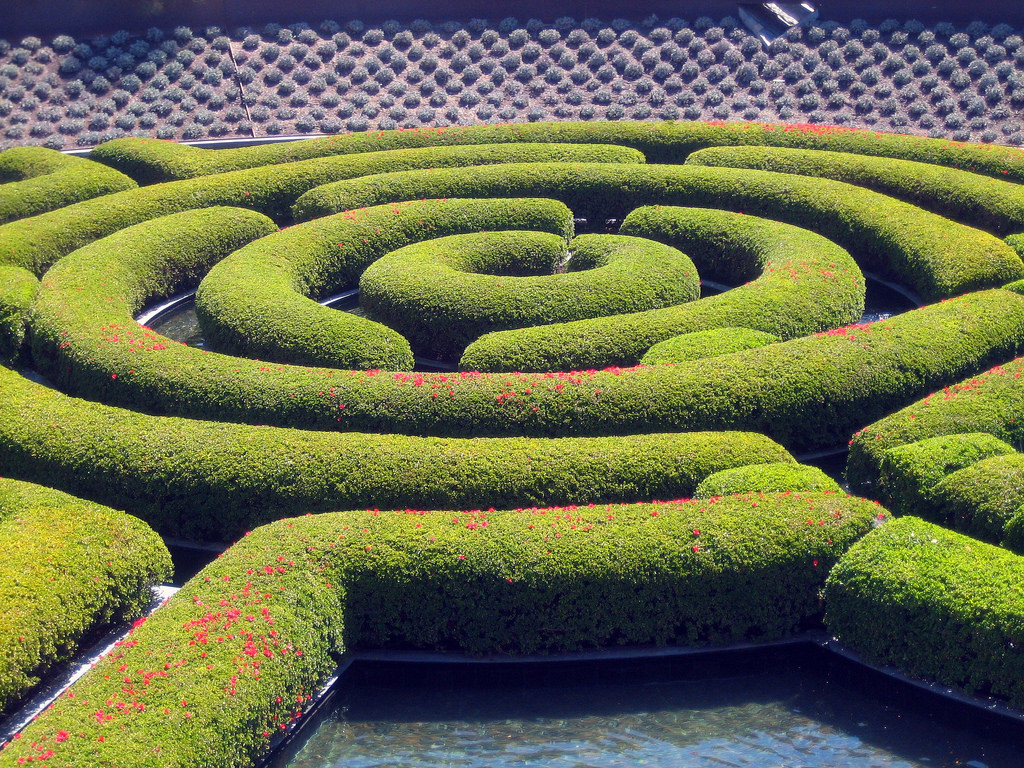The origin of our word labyrinth is found in Greek mythology. According to the myth, King Minos of Crete commissioned the famous architect Daedalus to create the Labyrinth. The complex would serve as a prison for the Minotaur, a monster with a human body and a bull’s head. The Labyrinth was so complicated that even Daedalus barely knew how to navigate it. To protect the secrets of the structure, King Minos imprisoned Daedalus and his son, Icarus, in the Labyrinth. However, they both escaped using ingenious wings held together by wax. Daedalus warned his son not to fly too close to both the sun or the ocean, in order to keep the wings intact. Icarus, though, disregarded his father’s advice and impetuously flew too close to the sun. He fell to his death when the heat from the sun melted the wax holding his wings together.
Labyrinths were originally created for artistic or religious purposes (Doob 23). They are classified as either multicursal, containing multiple paths, or unicursal, containing one path. Labyrinths in literature, such as Daedalus’s Labyrinth, are multicursal. The multicursal labyrinth is designed to frustrate and confuse the maze-walker (Doob 46). On the other hand, the unicursal maze is designed to test the maze-walker’s mental and physical endurance (50). Doob also notes that the labyrinth’s “very point is to impose a confusing and difficult process on someone because that extraordinarily baffling process is just what it takes to prepare the maze-walker for moral, aesthetic, or intellectual transcendence” (56). While the maze may be challenging, it is ultimately very rewarding.
Depending on one’s perspective, a maze is either chaotic and confusing, or beautiful and logical (18). The maze-walker is subjected to what feel like arbitrary twists and turns inside the maze. However, if the maze-walker could look at the maze from above, he or she would see the pattern and elegance of the winding path(s) (24). The Tree of Life Labyrinth™ in Ariel-Foundation Park is designed for walkers to pass through and reflect on life. It is an example of the unicursal structure. The park’s labyrinth differs from multicursal labyrinths because it is meant to provide clarity and a peaceful place for reflection. The benches placed along the winding path, inscribed with important community values, illustrate this intention. Within the labyrinth, one sees only a winding path. From a perspective outside of the labyrinth, one sees the true elegance and logic in its twists. Whether you walk through the labyrinth or view it from above, you are encouraged to reflect on your particular experience and perspective.
Works Cited
Doob, Penelope Reed. The Idea of the Labyrinth from Classical Antiquity through the MiddleAges. Cornell University Press, 1990.
For more information about Daedalus and the Labyrinth, see these links:
https://www.britannica.com/topic/Daedalus-Greek-mythology
https://www.greekmythology.com/Myths/Mortals/Daedalus/daedalus.html
http://www.mythweb.com/encyc/entries/daedalus.html

